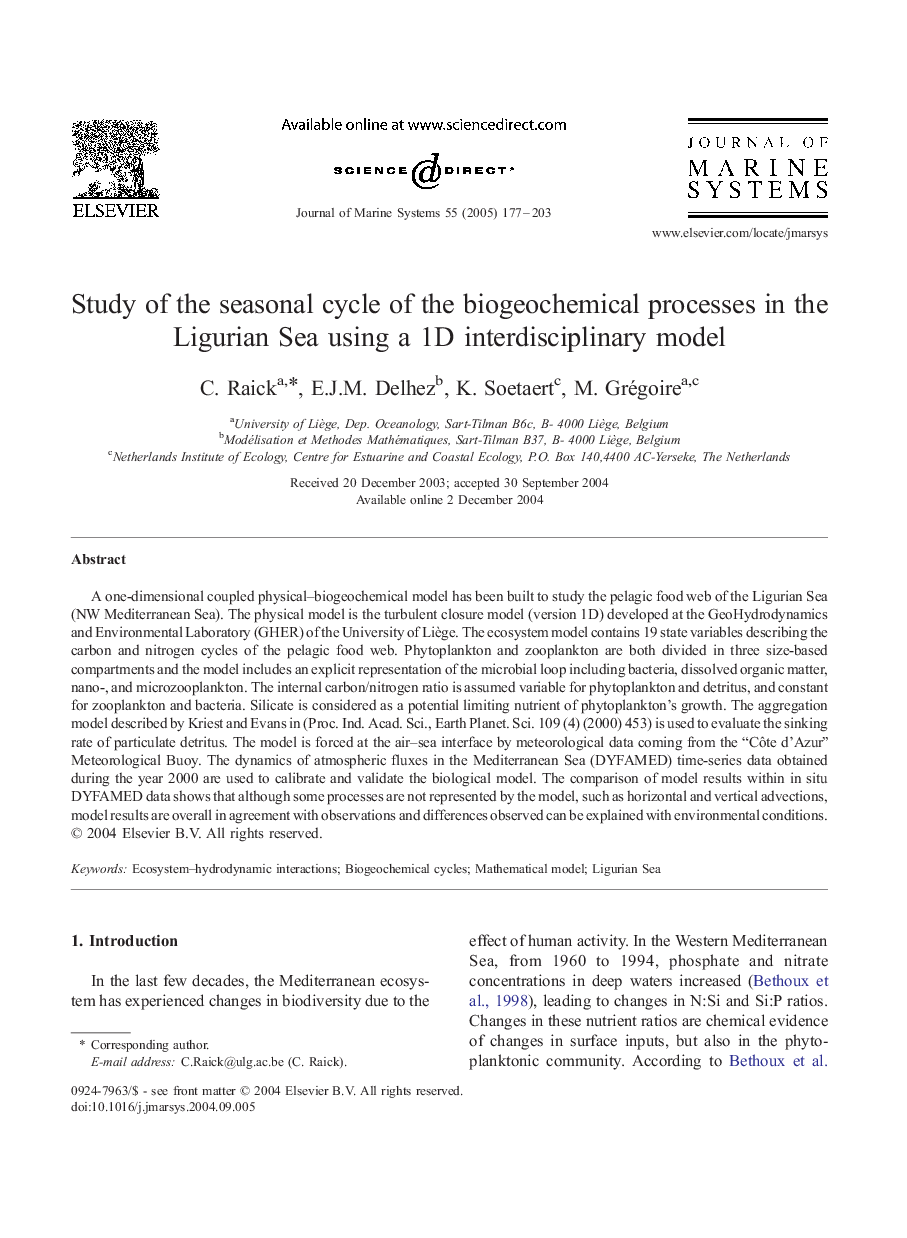| کد مقاله | کد نشریه | سال انتشار | مقاله انگلیسی | نسخه تمام متن |
|---|---|---|---|---|
| 9483488 | 1627376 | 2005 | 27 صفحه PDF | دانلود رایگان |
عنوان انگلیسی مقاله ISI
Study of the seasonal cycle of the biogeochemical processes in the Ligurian Sea using a 1D interdisciplinary model
دانلود مقاله + سفارش ترجمه
دانلود مقاله ISI انگلیسی
رایگان برای ایرانیان
کلمات کلیدی
موضوعات مرتبط
مهندسی و علوم پایه
علوم زمین و سیارات
اقیانوس شناسی
پیش نمایش صفحه اول مقاله

چکیده انگلیسی
A one-dimensional coupled physical-biogeochemical model has been built to study the pelagic food web of the Ligurian Sea (NW Mediterranean Sea). The physical model is the turbulent closure model (version 1D) developed at the GeoHydrodynamics and Environmental Laboratory (GHER) of the University of Liège. The ecosystem model contains 19 state variables describing the carbon and nitrogen cycles of the pelagic food web. Phytoplankton and zooplankton are both divided in three size-based compartments and the model includes an explicit representation of the microbial loop including bacteria, dissolved organic matter, nano-, and microzooplankton. The internal carbon/nitrogen ratio is assumed variable for phytoplankton and detritus, and constant for zooplankton and bacteria. Silicate is considered as a potential limiting nutrient of phytoplankton's growth. The aggregation model described by Kriest and Evans in (Proc. Ind. Acad. Sci., Earth Planet. Sci. 109 (4) (2000) 453) is used to evaluate the sinking rate of particulate detritus. The model is forced at the air-sea interface by meteorological data coming from the “Côte d'Azur” Meteorological Buoy. The dynamics of atmospheric fluxes in the Mediterranean Sea (DYFAMED) time-series data obtained during the year 2000 are used to calibrate and validate the biological model. The comparison of model results within in situ DYFAMED data shows that although some processes are not represented by the model, such as horizontal and vertical advections, model results are overall in agreement with observations and differences observed can be explained with environmental conditions.
ناشر
Database: Elsevier - ScienceDirect (ساینس دایرکت)
Journal: Journal of Marine Systems - Volume 55, Issues 3â4, April 2005, Pages 177-203
Journal: Journal of Marine Systems - Volume 55, Issues 3â4, April 2005, Pages 177-203
نویسندگان
C. Raick, E.J.M. Delhez, K. Soetaert, M. Grégoire,